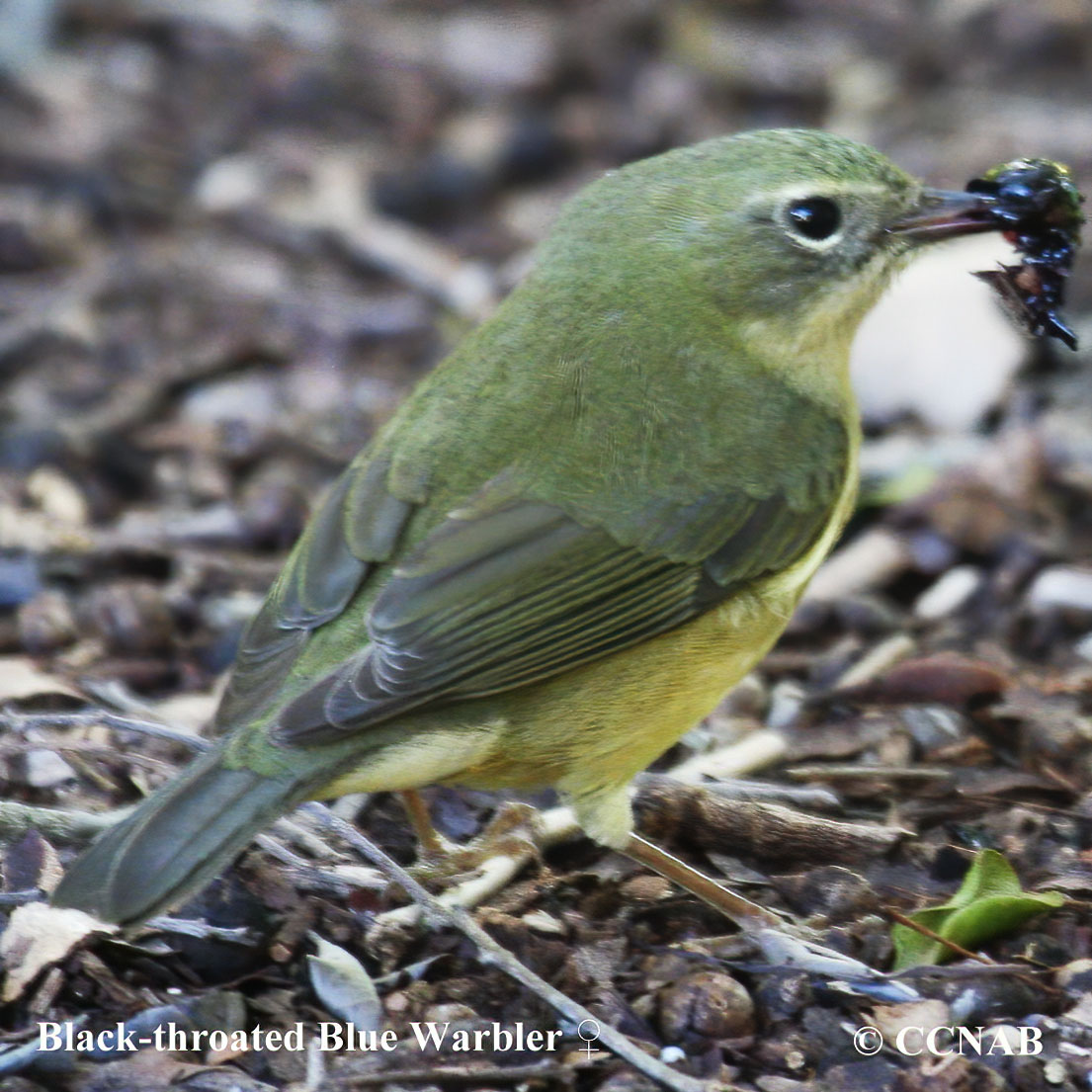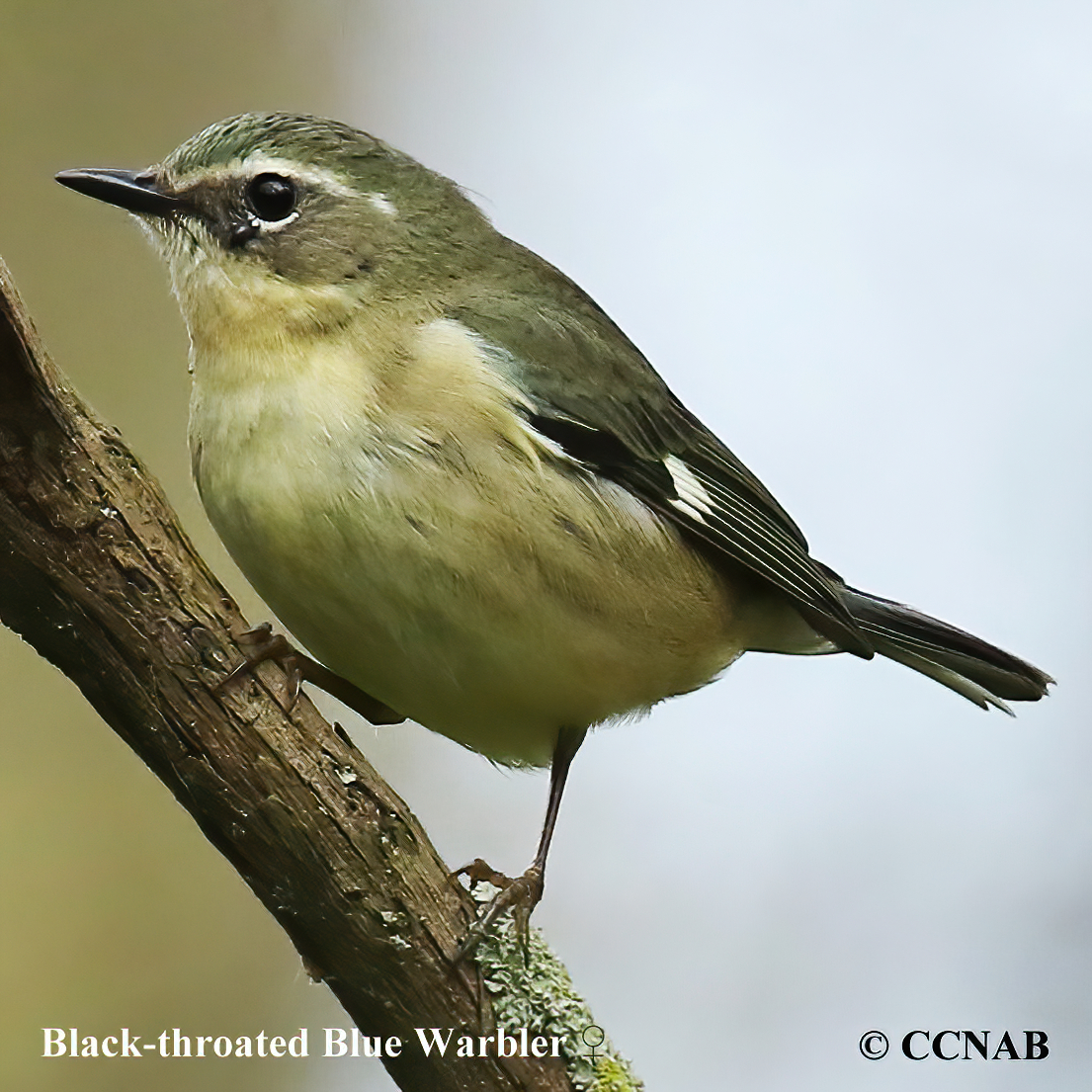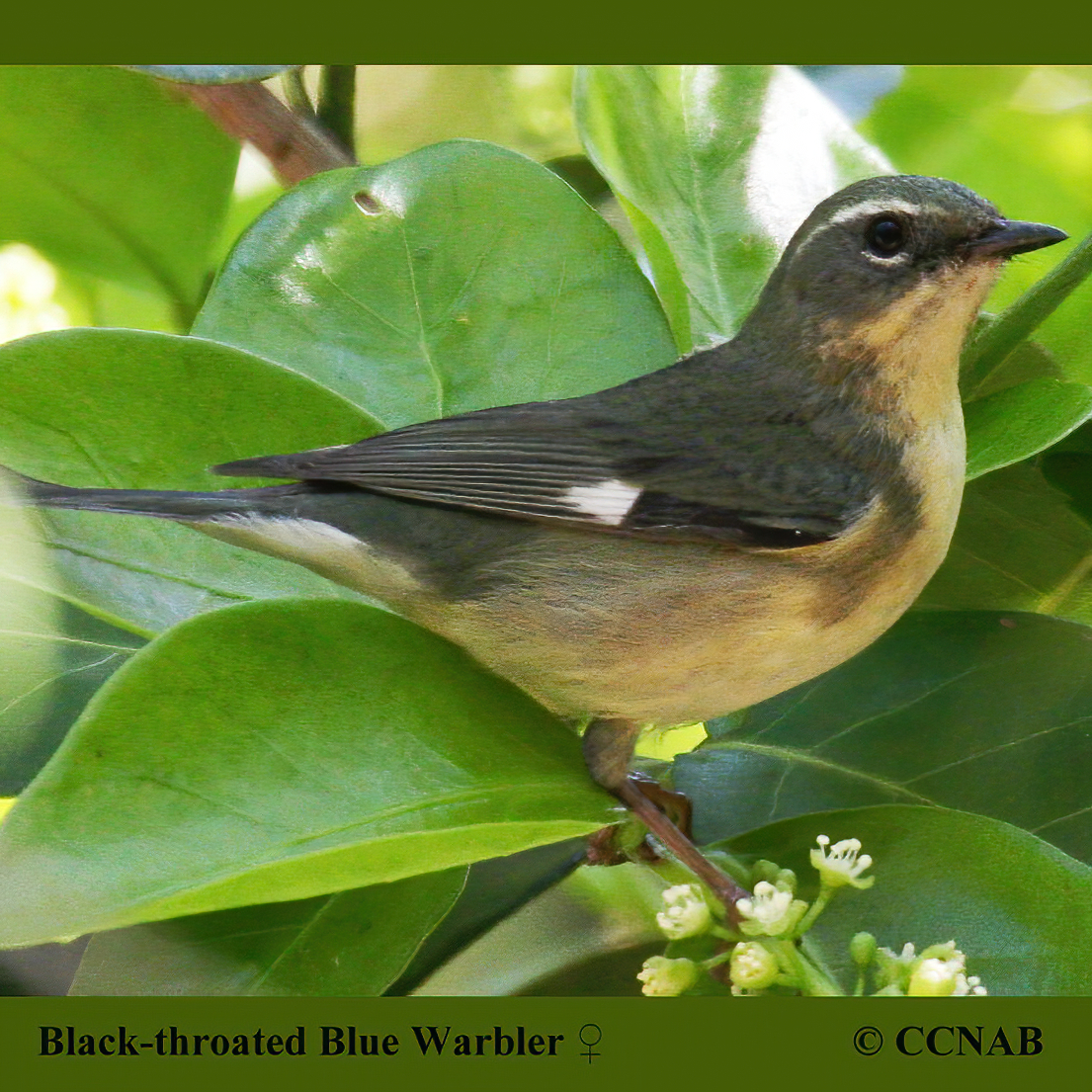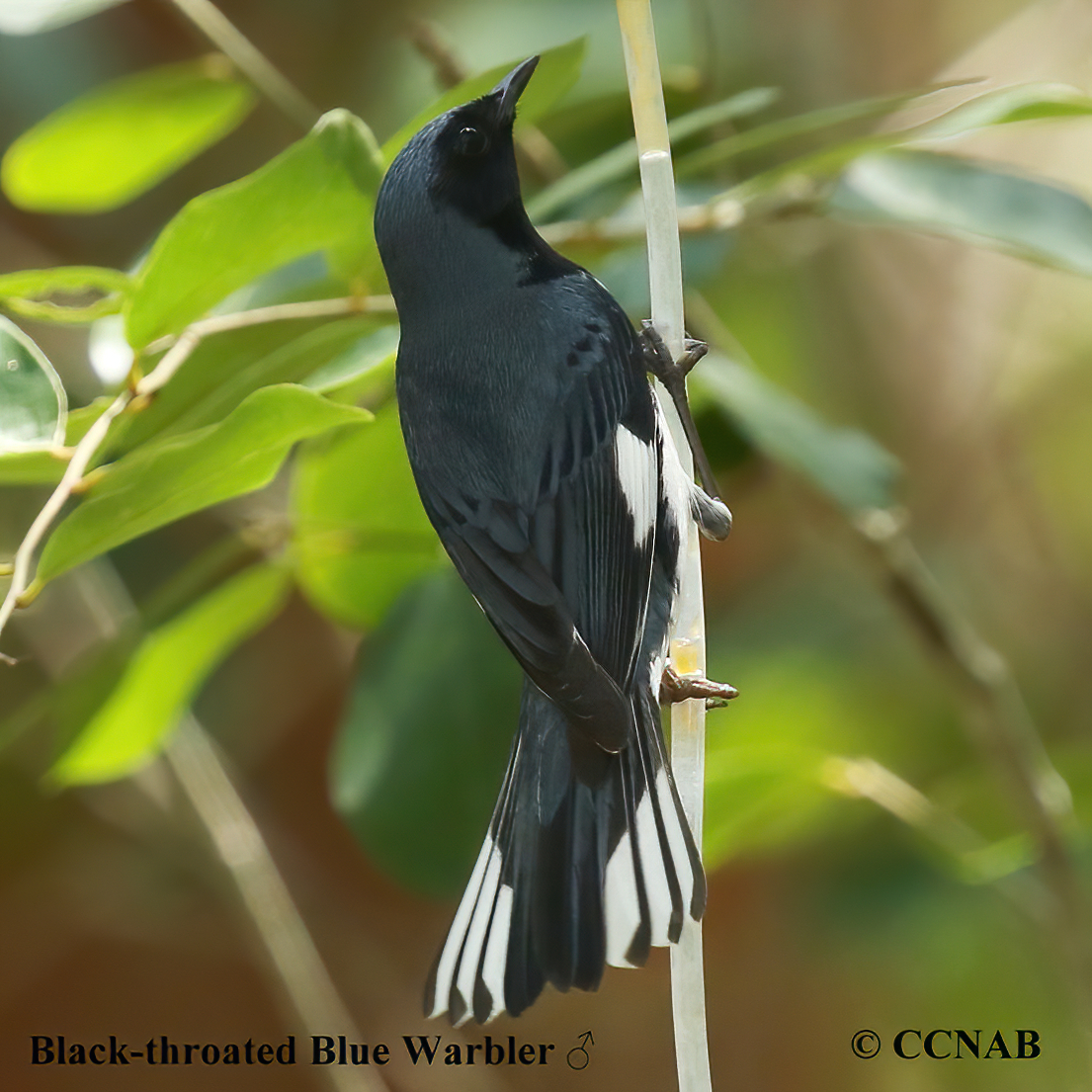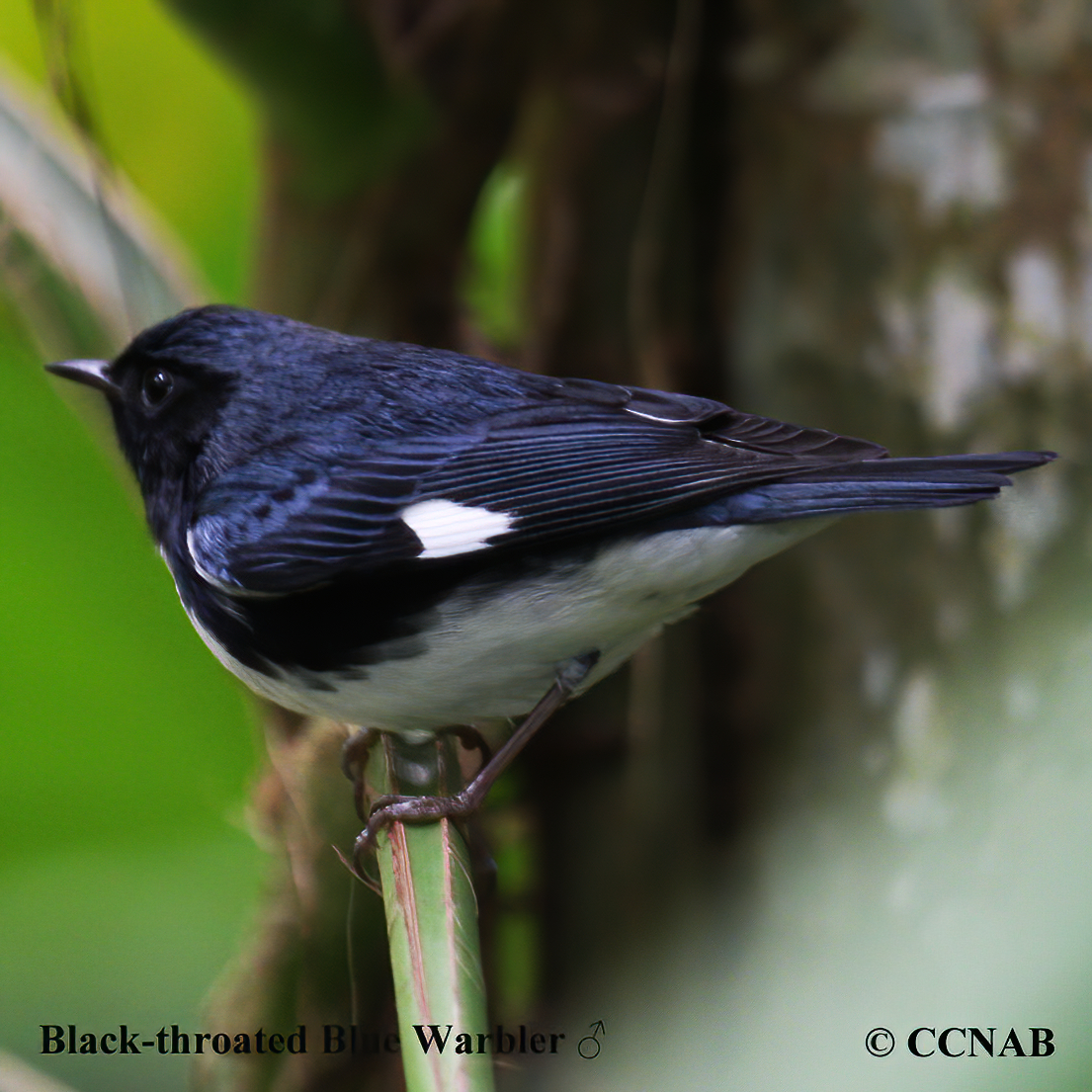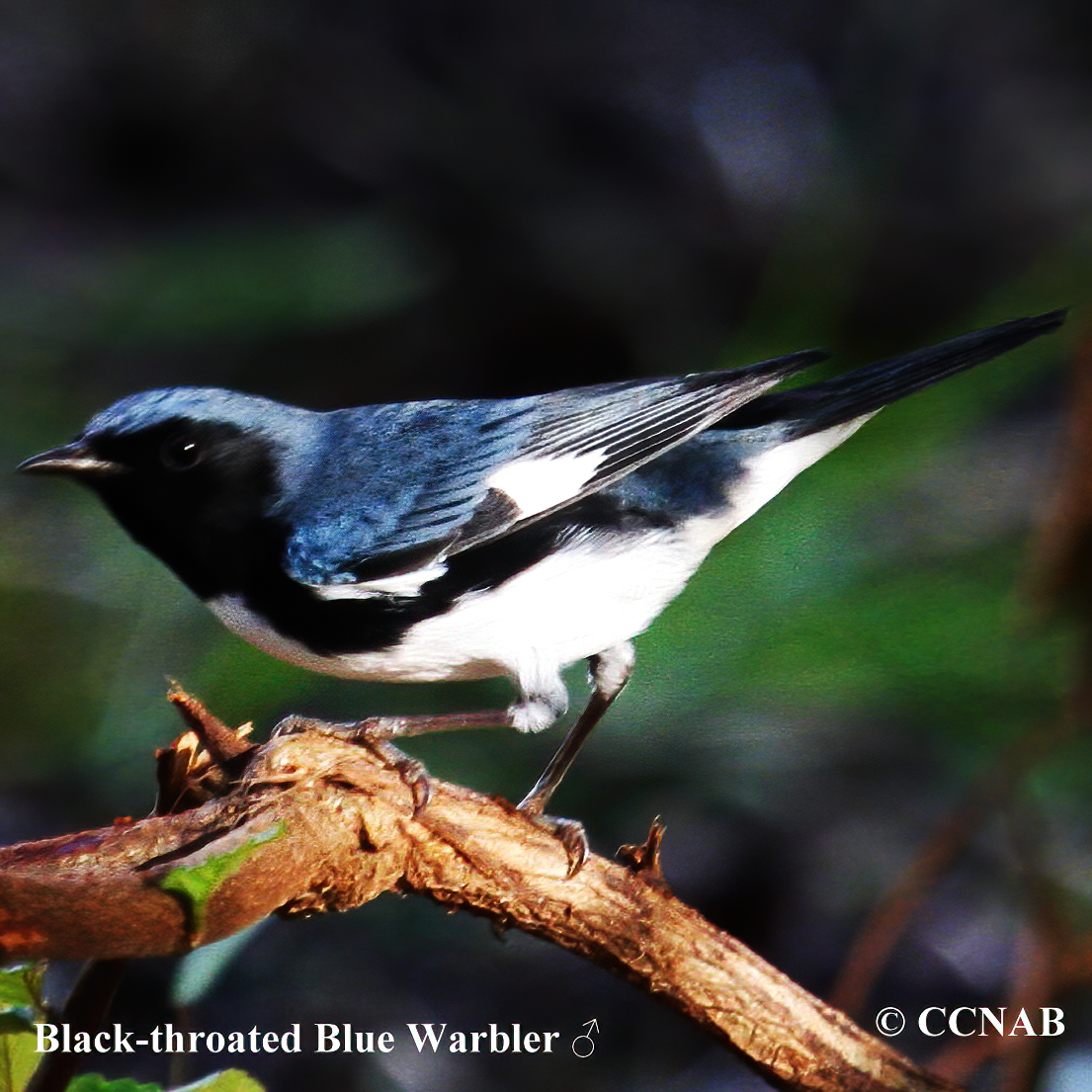North American Bird Search Box
This search box can be used to find bird species using bird's english, french or latin name, or to identify bird by its 4 letter Alpha Code
Field Guide for all the Birds of North America
Black-throated Blue Warbler
4 Letter (english names) Alpha Code: BTBW (1)
Paruline bleue
Setophaga caerulescens
Information, images and range maps on over 1,000 birds of North America, including sub-species, vagrants, introduced birds and possibilities
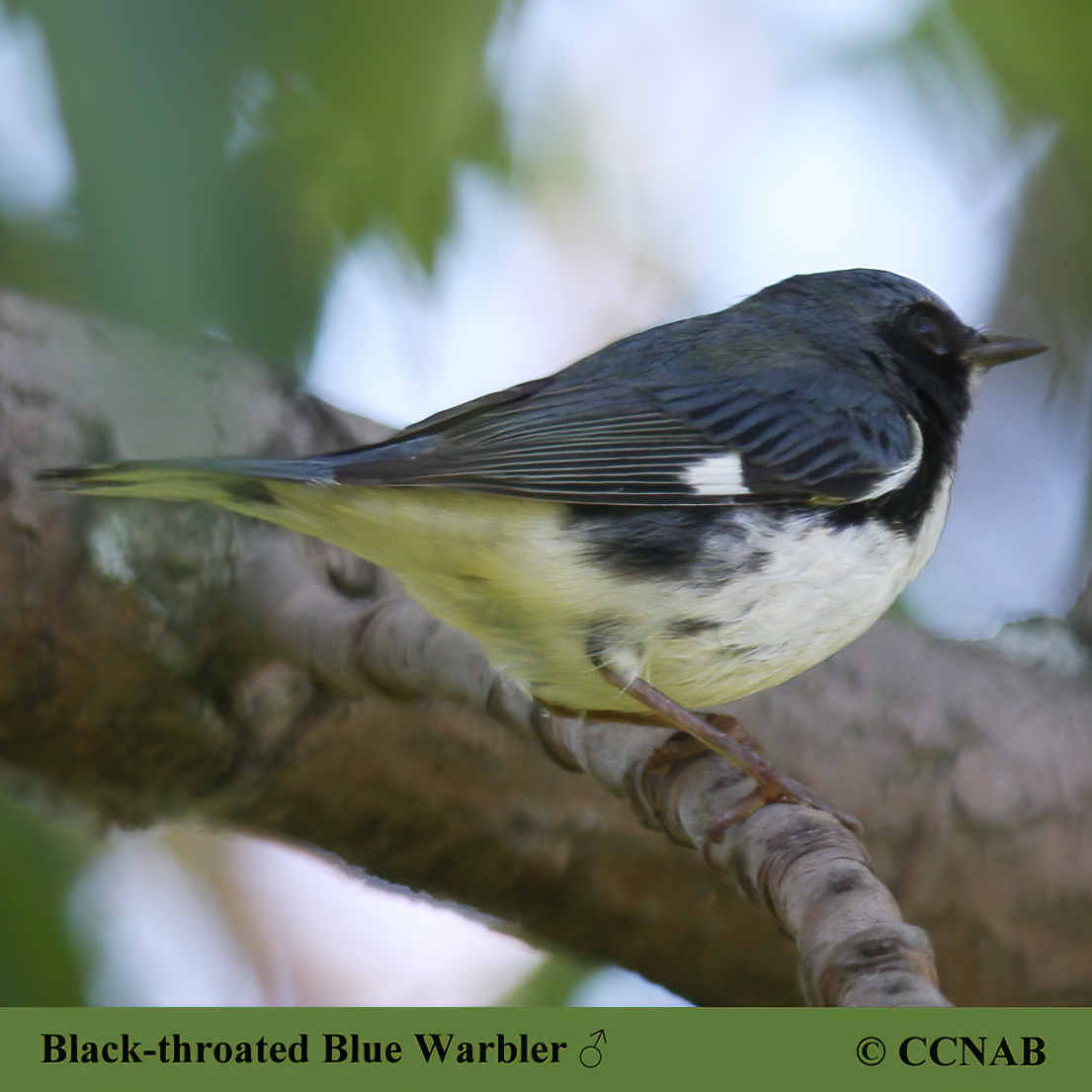
Species: The Black-throated Blue Warbler (Dendroica castanea) is seen in eastern North American. This warbler prefers feeding close to and on the forest floors. It is here that it can easily be observed, as it hops and flies from one shrub to another or actually feeding on the forest floor. It can be seen in coniferous or coniferous/deciduous environments. The female is less conspicuous than the male and may be harder to seek out. It migrates to the Caribbean islands, Central and South America during the winter months.
Distinctions: The male is distinguished from the female. It has a dark blue crown, back, wings and tail. The face and throat, is black, including its flanks. A noted white patch on the primaries is seen on both sexes, more obvious on the male. The female has the most difference in appearance between the male and female of all warblers. It has a brownish-green body, including the head, neck, back, wings and tail, all with no signs on streaking, dark cheek patch, tan-coloured flanks, and a soft whitish-brown breast. An important field mark to point out is the half white crescent seen below the eyes.
Voice: Chipping call, slow and heavy notes, sound like zur, zur,zree, continuous calling.
Nesting: Three to five white to creamy-coloured eggs, with brown markings. Its nest might be found in a small deciduous or coniferous trees. The nest is composed of finer bark stripes, leaves, twigs, pine needles, mosses, and lined with fine grasses and hair.

Life, Habitat & Pictures of North American Warblers
| B L | W W | W | Family | Latin Name |
|---|---|---|---|---|
| 5.25" 13.3cm | 7.75" 19.7cm | 0.4oz 11.3g | Parulidae | Setophaga caerulescens |
North American Birds Videos
- Click here - Male breeding plumage
- Click here - Male breeding plumage in the rain
North American Bird Calls
- Click here
- Summer
- Year Around
- Winter
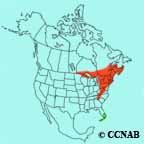
Distribution: Found from Newfoundland through southern Quebec, around the Great Lakes, reaching as far as Manitoba and some of the US states. Reaching south to the top of Georgia, north into New Jersey, through the northeastern states and the provinces of New Brunswick and Nova Scotia. Some may spend their winter months in southern Florida.
Reference to Other Bird Site:
ABA - American Birding Association This site represents an organization that maintains official records of all birds species that have been proven to have been seen inside the perimeters of the North American Continent and the surrounding bodies of water. Regular revised versions are posted to keep the bird list current at all times. This is the list used by all serious birders over their lifetime. You may be aware of the movie called the "Big Year". It was with this list that all the competing birders used in an attempt to set a new record as to how many bird species that could be seen by an individual birder in one calendar year.
